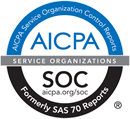Contact Us
- Call Now:(01)773-455-6676
- Sales Email:sales@dedicatedhosting4u.com
- Support Email:support@dedicatedhosting4u.com
- Billing Email:billing@dedicatedhosting4u.com
Close Support
Formulating your Dedicated Server requirements
Formulating your Dedicated Server requirements
Switching to some dedicated server will demand several alternatives. It is crucial so that you can understand how to decide your dedicated server requirements before choosing a dedicated hosting supplier. Choosing an operating system, determining data transfer requirements, selecting computer software, analyzing back up needs, value, and security are just a few of the facts to consider when determining your dedicated server needs.
Picking a Dedicated Server – Resources
If you may be renting the dedicated server through a dedicated hosting supplier you need to make sure you pick a hosting service that is certainly reliable, continues to be a well established business for a long time, has outstanding customer service, and has a good reputation for offering top quality professional services. In addition to these aspects you will have to find out where datacenter is situated as it will impact the load time. Also, be certain to find out about monitoring, security, and computer hardware replacement guarantees are offered. If your hosting server features a issue you want to understand that the company will notice the issue and acquire focusing on it right away to prevent any prolonged blackouts.
Dedicated Server Needs – OS
There are several reasons to consider when selecting Windows or Linux for your dedicated server. Cost: Linux is normally considerably cheaper than Windows. As the Linux program is open-source and the license is free so hosts can offer it a whole lot less expensive than the Windows OS in which they must pay out a licensing fee.
Script support: Linux facilitates MySQL, PHP and Perl. Windows use Microsoft SQL, .NET, Microsoft Access as well as other MS products like SharePoint, Front page and others.
Besides what you could pay for, your knowledge of Linux or Windows software and scripts is a significant deciding factor.. Another benefit of selecting Linux is the fact it is open-resource. and most of the times, patches and problems are typically addressed and fixed a lot more rapidly than on Windows, since there is a huge community of people focusing on Linux projects all of the time.
Managed or Unmanaged Dedicated Server Hosting
After considering many of these issues, if you decide that you simply don’t absolutely need a dedicated server at this time you might like to switch to a Virtual private server (digital private server) for quite a while. A good Virtual private server support will give you the same basic benefits of a dedicated server in a much cheaper regular monthly rate. Sign up with a VPS hosting service that also offers dedicated servers and let them know ahead of time that you plan to upgrade when you outgrow the VPS plan if you anticipate continued growth or plan to add additional websites.
- A number of the capabilities that customers may wish managed include:
- Application updates & monitoring
- Hardware tracking
- Security audits
- Software program configuration and installation
- Backups and recovery
- Disaster healing
- And computer virus updates and service spam and Firewall
Right after contemplating all of these issues, if you determine which you do not absolutely need a dedicated server yet you might want to move to a VPS (online exclusive host) for some time. An excellent Virtual private server service will give you the same fundamental advantages of a dedicated server at a less expensive month-to-month price. If you anticipate continued growth or plan to add additional websites then sign up with a VPS hosting service that also offers dedicated servers and let them know ahead of time that you plan to upgrade when you outgrow the VPS plan.
Be sure to talk with your host about the different options that will be available if you are ready for a dedicated server now but want the ability to add additional resources later on.
Let’s look at Big Data as an example.
Big data is a term used to describe a large volume of data that cannot be handled using standard software or computational approaches. Along with the huge volume, the phrase also denotes the wide range of tools, approaches, and frameworks that make tackling and processing the data difficult. When correctly saved and handled, this huge data may provide organizations with valuable insights. Big data may assist firms in accelerating their growth in a variety of ways.
What Are the Benefits of Big Data for Businesses?
Large volumes of data from internal and external sources can be stored and processed by enterprises. To come up with great business ideas, use resources such as corporate databases, social media, and search engines. It can also help them anticipate occurrences that could have a direct influence on their operations and results. On the marketing front, it may help you enhance conversion rates by only presenting clients with relevant schemes, launches, and promo offers based on their purchasing habits. Big data is being used by forward-thinking businesses to generate new products, evaluate market circumstances, and capitalise on current and future trends for immediate commercial gains.
The Server’s Role in Big Data
It’s critical to pick the right hardware that can proactively aid in big data operations without dramatically raising expenses or complexities if you want to get the most out of big data. There are various obstacles to overcome, such as calculating the processing needs, storing large amounts of data at ultrafast speeds, and supporting massively parallel calculations without affecting the result. Choosing the proper sort of server is a key aspect of this plan.
The resource volume and technological configuration necessary for diverse big data activities are typically lacking on ordinary servers. As a result, you’ll require premium, purpose-built servers that are specifically designed to handle enormous data volumes. In addition, you’ll be able to help with computational, analytical, and processing activities. However, because no two clients are alike, the ultimate selection should be based on your individual requirements.
Six Things to Consider When Selecting a Server for Big Data Requirements
- Select high-capacity servers
Massive storage, ultra-fast recovery, and high-end analytical capabilities are the ideal characteristics of a big data server. As a result, you’ll need servers with the correct configuration and capacity to handle all of these needs without sacrificing performance.
Volume. Big data, as the name implies, feeds on massive amounts of data that can reach petabytes in size. A single Petabyte is comparable to 1,000,000 GB for the uninitiated. As a result, ensure that your server is capable of not just managing this large volume of data, but also of continuing to perform reliably while doing so.
Analyses in real time. Big data’s USP is its ability to organize and shape a large volume of heterogeneous and unstructured data while smoothly integrating it with existing structured data. As a result, you’ll need servers with extremely high processing capacity to manage this demand without fail.
Capabilities for retrieval. Enormous data has big goals as well. For example, in real-time stock trading analysis, even a fraction of a second may make a big difference and cause several changes. For this, your server should be able to handle several users adding multiple inputs at the same time.
- Adequate memory
For big data analytics tools and apps, RAM is one of the most important needs. Using RAM instead of storage can dramatically increase processing speed and allow you to produce more in less time. It equates to higher productivity and shorter time-to-market, both of which provide you a competitive advantage in the market. It is impossible to recommend a typical RAM volume due to the wide range of needs in terms of volumes and processes. However, to be on the safe side, at least 64GB RAM is recommended. It is recommended that readers discuss their needs with providers in order to learn about the appropriate memory requirements for their purposes.
- Improved Return on Investment with NoSQL Databases, MPP, and MapReduce
You should also help your clients separate their analytical and operational requirements. It necessitates judicious server hardware optimization to achieve the goal. It is preferable to use NoSQL databases.
Unlike conventional databases, NoSQL databases do not have to be hosted on a single server and may be distributed over numerous servers. It aids it in coping with massive computations by boosting its capabilities by orders of magnitude and scaling up to shifting demands in a fraction of a second.
NoSQL databases are a type of database that doesn’t save data in the traditional tabular format. Its non-relational data storage technique effectively aids enterprises in overcoming the constraints and complexity that standard relational databases impose. This method provides end-users with high-speed scalability at a comparatively low cost.
MPP databases (massively parallel processing) and MapReduce can be used to speed up analytical big data capabilities. These databases can outperform standard single servers in terms of scalability. You may also seek for NoSQL systems that have MapReduce technology built in, which allows them to expand to the cloud or a cluster of servers.
- Enough Network Capacity
You’d have to transfer large amounts of data to the server. Your activities may be slowed if your network capacity is insufficient. Take into account the fluctuations as well. Because you won’t be writing large amounts of data on a regular basis, purchasing high bandwidth plans isn’t a cost-effective option for you. So, go with customized bandwidth options that allow you to pick the best bandwidth for your data transmission needs.
You may pick from a variety of bandwidth packages ranging from 20 TB to 1000 TB per month. To make things easier, notify your provider of your anticipated data transfer needs and inquire about the optimal bandwidth volume. For more demanding corporate clients, reputable suppliers can also supply unmetered bandwidth. 1Gbps is the smallest amount of bandwidth you’ll need for your server, depending on the volume and frequency of traffic.
- Storage Capabilities for Specific Purposes
In addition to storing permanent data, your server must be able to handle massive volumes of interim data generated throughout various analytical processes. As a result, you’ll need enough data storage. Instead of selecting storage primarily on its capacity, consider how relevant it is to your needs. Reputable providers would always advise you to double-check your requirements before purchasing storage. For example, spending a lot of money on pricey SSD storage doesn’t make sense if your data storage needs are little and a regular HDD can do the job for much less money.
- Processing Capacity at the High End
The processing processes are often divided among various threads by big data analytics systems. These threads are dispersed among the machine’s cores and run at the same time. 8-16 cores are required for a moderate to average load, however more may be required depending on the load. If you want more competent performance, the rule of thumb is to go for a bigger number of cores rather than a smaller volume of very capable cores.
Should You Use Server Optimization Software to Meet Big Data Needs?
Standard data servers with restricted capabilities in terms of multitasking, output, and analytical insights are unable to meet the demands of the big data ecosystem. It also lacks the extreme speed required for real-time data analysis. As a result, you’ll need custom business servers that can adapt to your specific demands in terms of volume, velocity, and logical processes. White box servers may be required for large-scale big data activities.
While it is technically feasible to use software to optimize the server environment, it is not recommended. It may end up being a more expensive alternative in the long term due to a lower return on investment.
It also exposes your system to a variety of security vulnerabilities while also raising administration headaches such as license purchase and maintenance. You’d also be constrained in your ability to fully utilize the existing resources and infrastructure
Using a purpose-built server for large data requirements, on the other hand, has a number of advantages, including:
- There are more operations per I/O, which translates to more computing power.
- Higher parallel processing capabilities
- Enhanced virtualization capabilities
- Improved scalability
- The advantages of modular design
- Improved memory
- Processor usage is improved.
Furthermore, specifically configured servers can intelligently collaborate. To ensure the most efficient use of resources, virtualization, and parallel processing. It’s easier to scale and maintain them because of their unique architecture.
Conclusion
Big data may assist your company in achieving rapid growth. However, to get the most out of your big data approach, you’ll need to create a purpose-built ecosystem that includes the right hardware.





